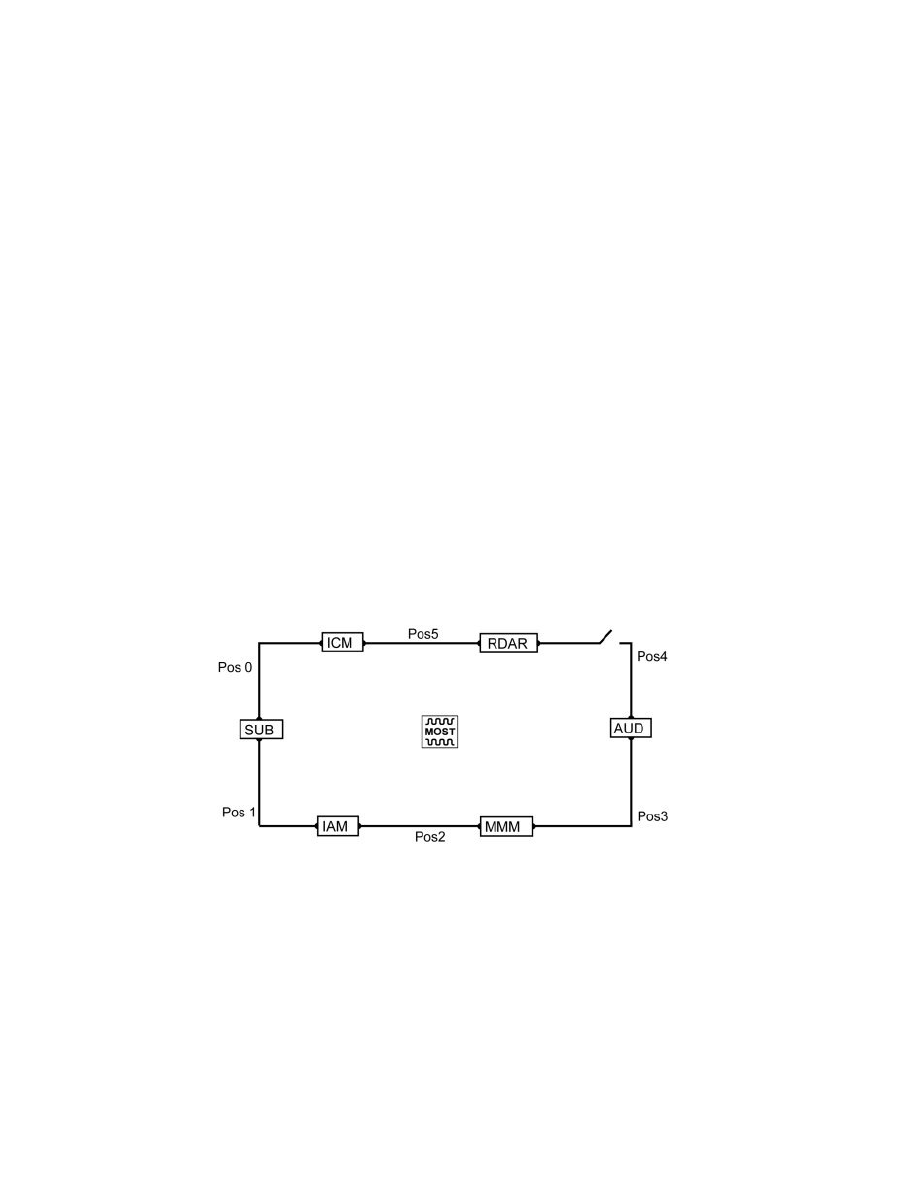XC90 FWD L6-3.2L VIN 98 B6324S (2007)

For faults when messages cannot be sent on the MOST network, diagnostic trouble code (DTC) ICM-DC02 is stored.
Causes of this fault may be that:
-
a control module, except the infotainment control module (ICM), has a defective optical connector
-
a control module has an internal fault which means that the optical connection stops working
-
a control module on the MOST network is not powered. If there is no power supply, the optical connector stops transmitting light
-
the optical cable is damaged or there is an open-circuit. This fault can occur if the bend radius of the cable is too small or if the cable is kinked or
trapped
-
there is dirt or oil on the optical connectors which impedes the light
-
the connection to a control module has come loose
-
the fiber optic terminals in the connector are cross-connected
-
there is a loose connection because the fiber optical wiring is incorrectly installed or the fiber optic terminal pin has been pressed back in the
connector
-
a bridging connector has come loose or is damaged.
Ring break diagnostics are used to remedy diagnostic trouble code (DTC) ICM-DC02. If a break is discovered in the MOST network after running a ring
break diagnostic, diagnostic trouble code (DTC) ICM-DC01 will be stored in the infotainment control module (ICM). If this is the case, the position of
the open-circuit and control module location, can be read off from the infotainment control module (ICM).
Ring break diagnostics
General
This function is important when fault-tracing the MOST network. Ring break diagnostics are used when there is an open-circuit in the MOST network
and diagnostic trouble code (DTC) ICM-DC02 has been stored in the infotainment control module (ICM).
During a ring break diagnostic, all control modules transmit a message to the infotainment control module (ICM) in reverse order to their position on the
MOST network. This means that the Subwoofer module (SUB) transmits first, not last.
The control module which is not working will not transmit a response to the infotainment control module (ICM). This also means that the control
modules which are connected before the defective control module will be unable to transmit a message to the infotainment control module (ICM).
The same applies in the event of an open-circuit in the fiber optic cable in the MOST network. None of the control modules before the open-circuit will
be able to send their message to the infotainment control module (ICM). The infotainment control module (ICM) is then able to calculate the position of
the open-circuit from the incoming messages.
Hint: It is important to know which control modules are connected and in what order to identify the control module which sends each message.
Example 1 (up to and incl. structure week 200708)
A MOST network contains 6 control modules. There is an open-circuit in the cable between the Remote Digital Audio Receiver (RDAR) and the audio
module (AUD). See the illustration.
During the ring break diagnostic, the infotainment control module (ICM) receives responses in reverse order to the order of the control modules on the
MOST network.
The Remote Digital Audio Receiver (RDAR), located after the Audio module (AUD) cannot transmit its response to the Infotainment control module
(ICM). The infotainment control module (ICM) receives responses up to position four and presents the value 4.
If there was no open-circuit, the infotainment control module (ICM) would have responded "OK.
Example 2 (from and incl. structure week 200709)
